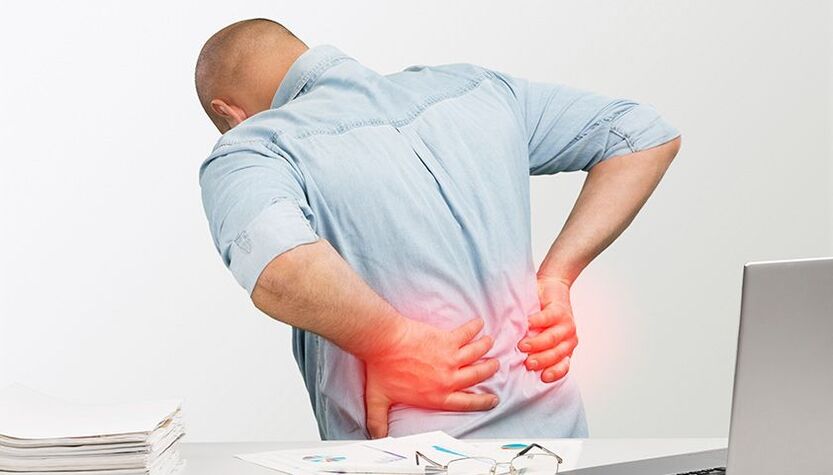
Lower back pain is quite common. It can be caused both by ordinary tiredness and by serious injuries and pathologies. If the pain is severe or does not go away after rest, it is important to see a doctor to rule out dangerous conditions.
What can lower back pain look like?
Lower back pain can be sharp or aching, appear suddenly or increase gradually, appear with loads or certain movements (for example, bending), or persist regardless of what the person is doing.
The pain may be pinpoint or radiating (that is, spreading to other areas). In this case, a person feels pain not only in the back in the lumbar region, but also in other parts of the body, such as the lower abdomen, perineum, leg or buttocks.
Lower back pain may include stiffness of movement or muscle spasms. The person may have difficulty bending or rising from a lying position, standing with a straight back, or maintaining posture while walking.
If the pain is caused by a muscle spasm or nerve compression, it can be unbearable and even disabling. Such pain forces you to stay in bed until you receive medical attention.
Why does my lower back hurt?
The most common cause of pain in the lower back is one or another pathology of the musculoskeletal system: sprains, pinching, inflammation. They are often found in men who work with their hands, athletes and young mothers.
Also, discomfort in the lower back can be a sign of acute or chronic diseases of the internal organs. This occurs because pain impulses can be transmitted along nerve fibers to nearby regions. In this case, they say the pain "radiates" to the lower back.
Diseases of the musculoskeletal system that cause pain in the lower back
Most often, lower back pain is caused by injuries and pathologies of the musculoskeletal system: muscle and ligament sprains, spinal injuries, hernia and protrusion of intervertebral discs, inflammation of the joints, bone diseases.
Deformations and sprains of muscles and ligaments
Such injuries can occur due to awkward movements if a person lifts something very heavy or does not follow safety precautions when handling bulky objects. You can also hurt yourself while playing sports or simply sneeze unsuccessfully.
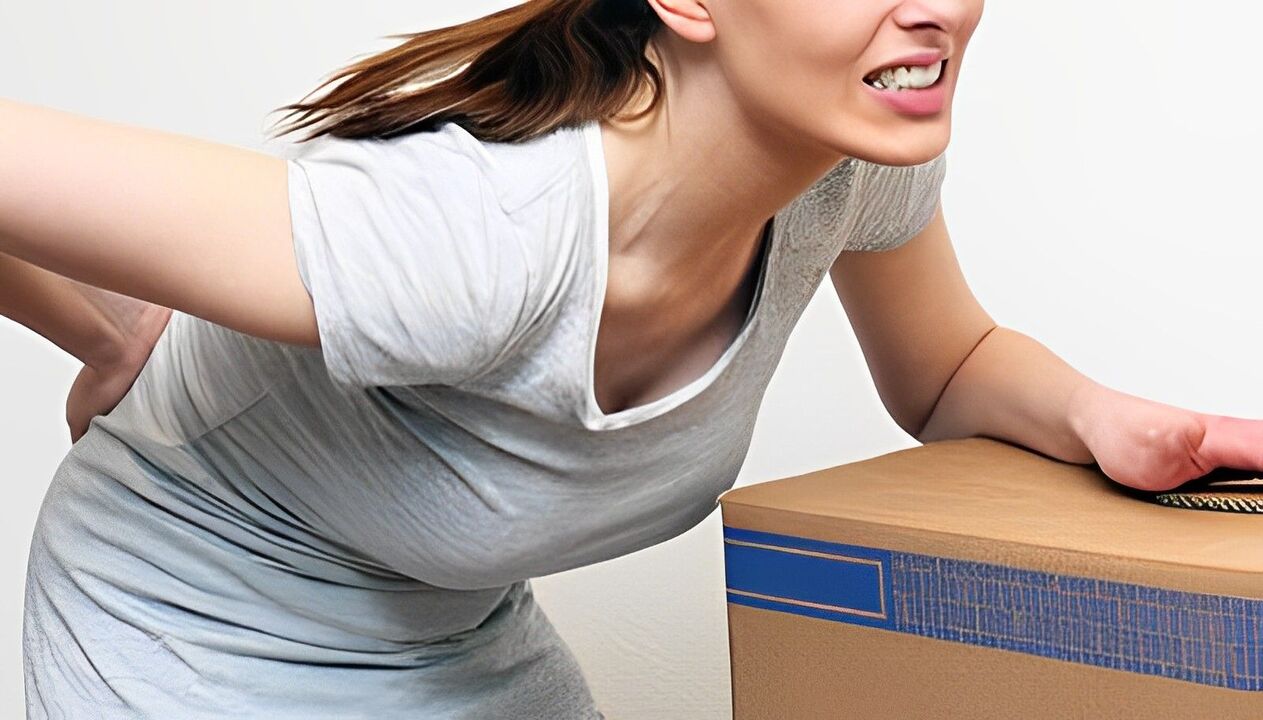
Lower back pain may occur if you lift heavy objects without following safety precautions.
In cases of sprains and strains, the pain intensifies during movement and spasms in the muscles may appear. It may be painful for the person to walk, bend forward, or hold their back straight.
The diagnosis of deformation and distortion of muscles and ligaments is based on data from physical examination and instrumental studies: ultrasound, radiography, magnetic resonance imaging of the lumbar region. If you suspect a sprain or deformation of muscles or ligaments, you should contact an orthopedic traumatologist.
Treatment involves relieving acute pain and muscle spasms using ice packs, painkillers, and medications to relieve muscle spasms (muscle relaxants). It is important to give the damaged area rest to allow the tissue to recover - this usually takes around 2 weeks. Subsequently it is important to begin rehabilitation: physiotherapy exercises aimed at restoring muscle function are indicated.
Without treatment, strains and sprains lead to limited mobility: trying not to injure the damaged area, a person reduces activity, which can lead to weight gain, decreased bone strength and loss of muscle mass.
Spinal injuries
Damage (usually a fracture) to one or more vertebrae occurs as a result of falls, accidents, sports activities, or home injuries. In people with bone density disorders (such as osteoporosis), such damage can be caused by even minor exposures.
Treatment of spinal injuries involves preventing displacement and further deformation of the spinal discs. If the damage is not serious, it is recommended to sleep on a hard surface and limit physical activity. If the damage is significant, surgical methods are used for fixation.
Without treatment, damage to the spinal discs can cause stenosis (narrowing) of the spinal canal, neurological disorders, including sciatica - pinched nerve fibers that extend from the spine.
Intervertebral disc pathologies
Intervertebral discs are fibrocartilaginous plates with gelatinous contents located between the vertebrae. They act as shock-absorbing cushions for the vertebrae, ensuring their mobility. The discs can shift (protrude) or rupture (herniate), causing severe pain and limiting the mobility of the spine.
Intervertebral hernias and bumps can occur in people with weak muscles and excess weight, in those who lead a sedentary lifestyle or lift heavy objects. People who smoke are more predisposed to intervertebral disc pathologies.
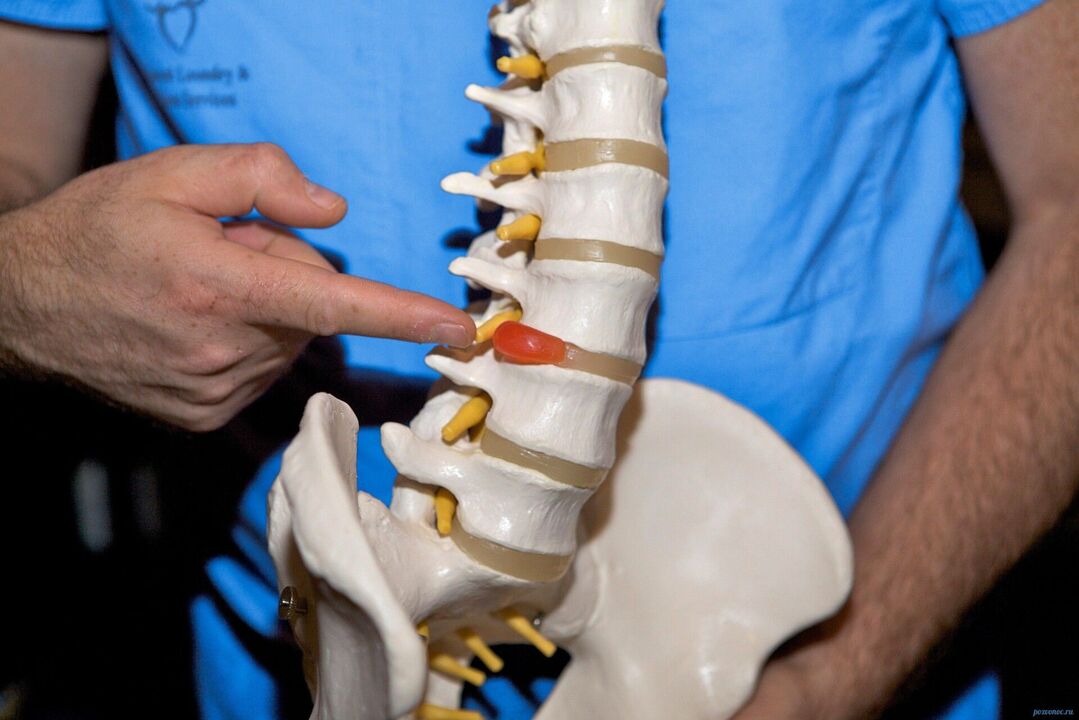
Intervertebral hernia: protrusion of an intervertebral disc into the spinal canal
Treatment consists of relieving pain and inflammation: rest, painkillers, ointments and compresses on the inflamed area are recommended. Your doctor may prescribe physical therapy or physical therapy. In case of moderate damage, the disc can recover if the cause of the herniation or protrusion is excluded, for example by strengthening the muscle corset, reducing weight and not placing excessive stress on the spine.
If your lower back pain is so severe that it interferes with daily activities, does not go away within 1 to 1. 5 months, or if your symptoms worsen, you should contact your doctor again. In some cases, steroid therapy or even surgery may be necessary. With age, it is possible to develop a degenerative disease of the intervertebral discs: they become flatter and perform a worse shock-absorbing function, which can also cause pain. In this case, the treatment involves reducing pain and overall improvement of the body.
Scoliosis of the lumbar spine
Scoliosis (curvature) of the spine is a shift of the spine to the right or left relative to the vertical axis. The pathology leads to increased pressure on certain areas of the intervertebral discs and vertebrae, as well as compression of tissues and nerve fibers. Scoliosis can cause severe pain in the lower back on the right or left, where most of the stress is located, and severely limit the mobility of the spine.
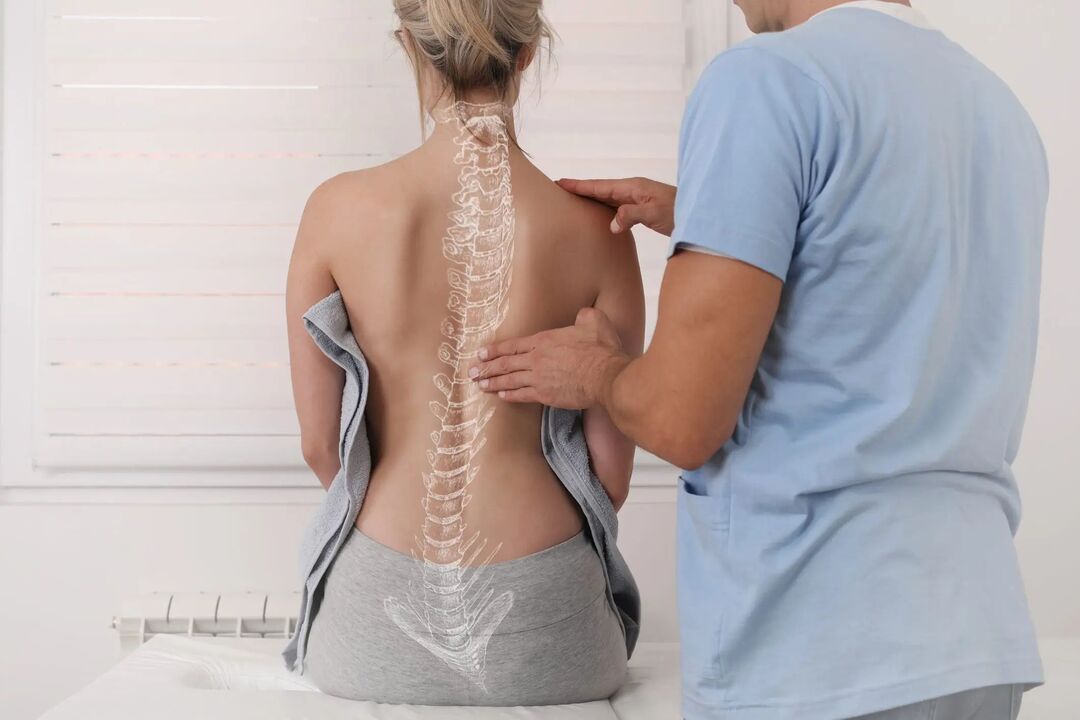
Scoliosis (curvature) of the spine can cause severe pain in the lower back area where a lot of stress is placed
Scoliosis can occur due to weakening of the muscle corset in the absence of sufficient physical activity, sedentary lifestyle (in schoolchildren, office workers). In this case the muscles have difficulty maintaining the physiological position of the back and curvatures are formed.
Treatment involves the introduction of balanced physical activity (physiotherapy, swimming), massage and manual therapy, physiotherapeutic procedures to strengthen muscles, such as electrical stimulation. For serious injuries it is recommended to wear a corset, which helps maintain the correct position of the spine.
Arthritis and arthrosis
Inflammation and degenerative processes in the joints of the spine can also cause severe pain in the lower back. There are many forms of arthritis, including arthrosis (damage to cartilage and adjacent tissues), ankylosing spondylitis (ankylosing spondylitis - damage to the joints of the spine, leading to fusion of the vertebrae).
Arthritis can be caused by natural aging, genetic predisposition or autoimmune diseases.
Treatment of arthritis, depending on its form, may include the use of nonsteroidal and steroidal anti-inflammatory and painkillers, physiotherapeutic procedures (magnetic therapy, electrophoresis), therapeutic massage and physical therapy.
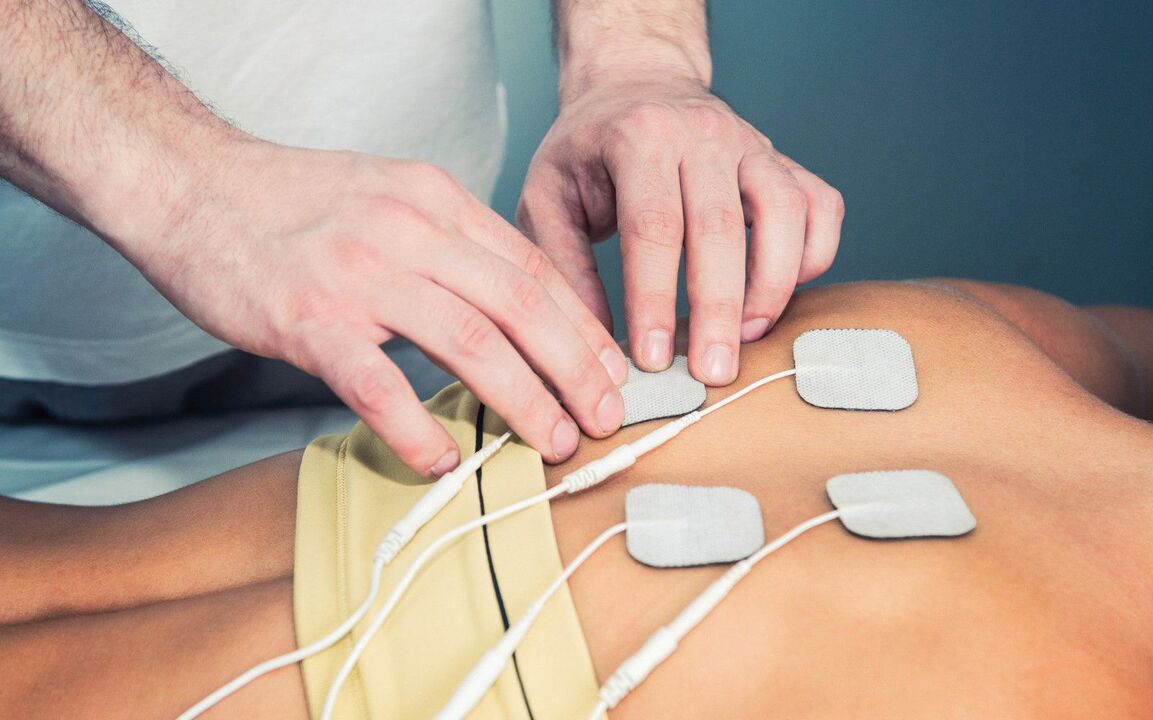
Physiotherapy procedures help relieve pain due to joint pathologies
Spondylolisthesis
Displacement of a vertebra relative to the spine (spondylolisthesis) occurs as a result of injury or degenerative processes in the spine. The pathology occurs in athletes, the elderly, or people with hereditary predisposition to bone diseases (for example, osteoporosis, a bone density disorder). Spondylolisthesis can cause severe pain in the lower back, buttocks, and legs and cause cramps or weakness in the legs.
Treatment involves relieving pain and inflammation that occurs due to compression of nearby tissues by the vertebra. Depending on the severity of the pain syndrome, the doctor may prescribe non-hormonal painkillers in tablets or injections of corticosteroid drugs. At the same time, physiotherapeutic procedures and physical therapy are prescribed to strengthen the muscles and restore the position of the vertebrae. If spondylolisthesis is accompanied by very severe pain, surgical treatment is used.
In traumatic and non-infectious pathologies of the musculoskeletal system, pain in the lower back usually subsides or decreases when the person takes a comfortable position.
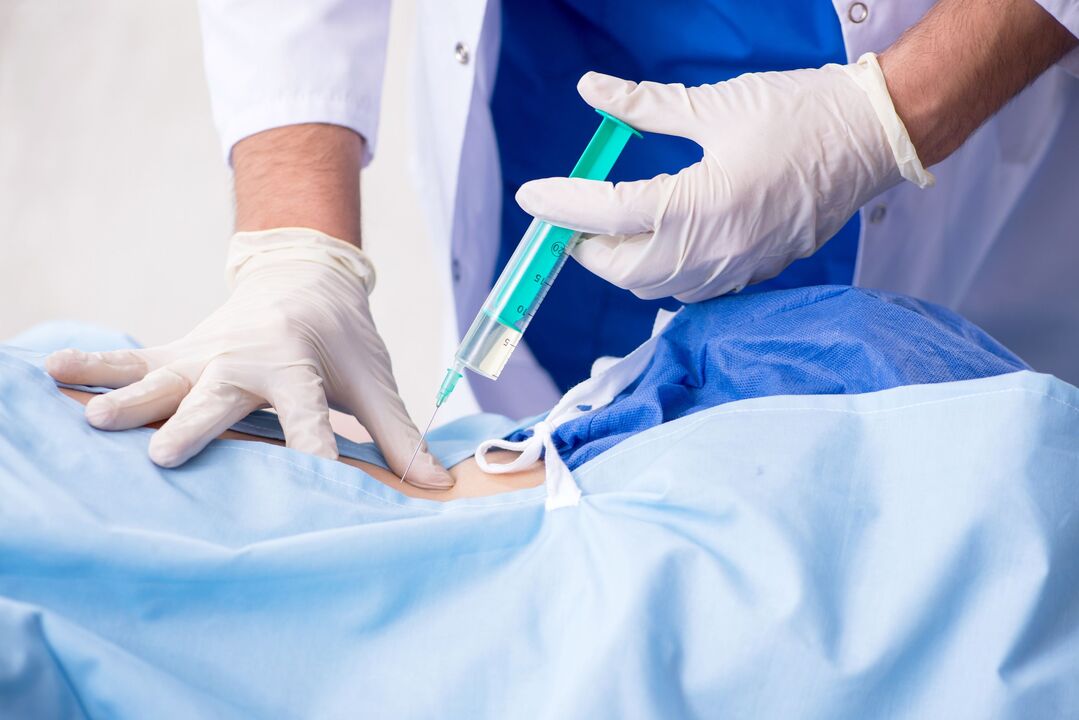
If spondylolisthesis is accompanied by severe pain, your doctor may prescribe corticosteroid injections.
Infectious diseases of the spine
Inflammation of the bone tissue (osteomyelitis) and inflammation of the intervertebral disc (discitis) can cause severe pain in the lower back. These pathologies, as a rule, are secondary in nature, that is, they arise as a complication of inflammation of other organs (the infection enters the tissues through the bloodstream).
Treatment involves hospitalization, lasts up to 1 month and then requires rehabilitation, which lasts 6 to 12 months.
Tumor diseases of the spine
Neoplasms can develop under the influence of hereditary or external factors (for example, radiation), but most often appear as repeated foci (metastases) in cancer of other organs: lungs, mammary glands, prostate, thyroid, kidneys.
One of the most characteristic symptoms of tumor pathologies is pain that does not decrease when changing position or after rest. Symptoms such as numbness, partial paralysis, uncontrolled urination and a sharp increase in body temperature with chills are also possible. Without treatment, symptoms get worse.
Treatment is prescribed based on the type of tumor, its location and symptoms and may include chemotherapy, radiation therapy and surgical removal of the tumor. Pain relief is carried out with non-hormonal or steroid drugs. To stabilize the spine, your doctor may prescribe wearing a corset.
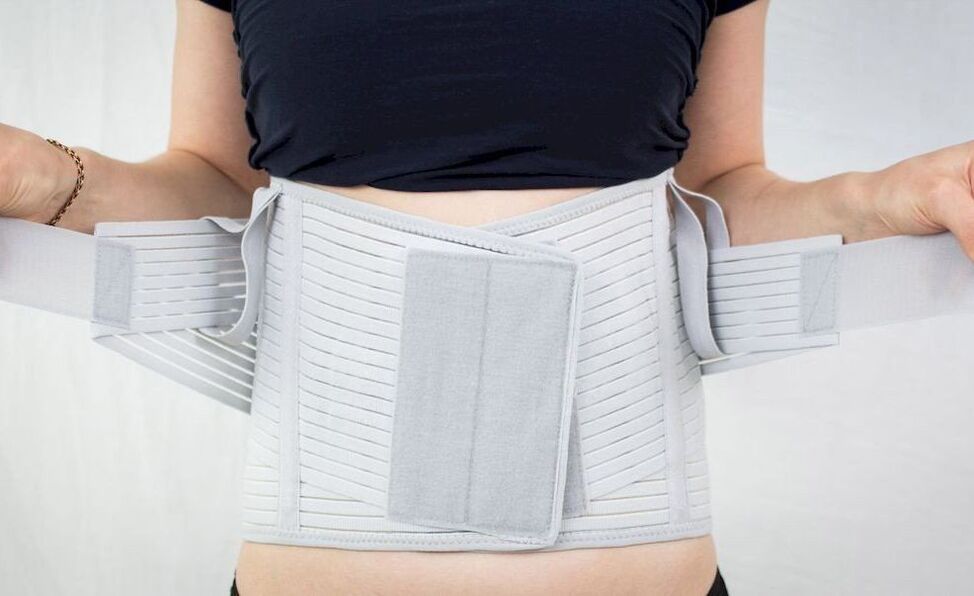
The orthopedic corset helps stabilize the spine
Diseases of the internal organs that cause pain in the lower back
Low back pain can occur with diseases not associated with pathologies of the spine and adjacent tissues. Acute or painful, it can accompany inflammation of the internal organs: pyelonephritis, urolithiasis, abdominal aortic aneurysm. In women, pain in the lower back can develop due to gynecological pathologies.
Urolithiasis disease
A disease in which stones are formed in the kidneys and bladder - hard formations from the sediment of chemical components of urine. Lower back pain is one of the main signs of pathology. Depending on their size and location, kidney stones can cause a dull, aching pain that comes and goes periodically, or a very sharp pain that doesn't go away on its own and requires emergency medical attention.
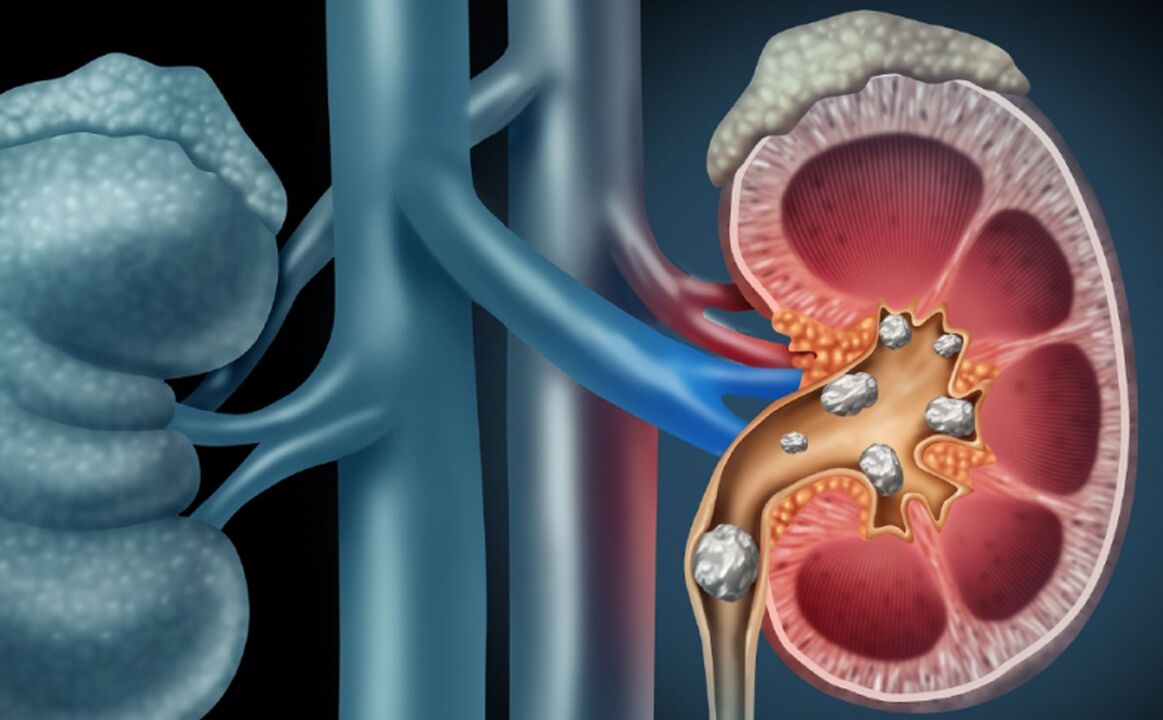
Urolithiasis: formation of stones in the kidneys and bladder
If you suspect kidney stones, you should contact a urologist or nephrologist. The doctor will prescribe instrumental tests and studies (ultrasound, radiographic examination, computed tomography, even with the use of a contrast medium) to make a diagnosis and choose therapeutic tactics.
Treatment is prescribed taking into account the size, nature, location of the stones and other factors. If the stone is small (5-10 mm) and there are no other indications for surgical removal, drug treatment is used. If no positive dynamics are found within a month, removal by non-invasive or surgical methods is recommended.
Abdominal aortic aneurysm
A weakening of the walls of the abdominal aorta (aneurysm) can lead to life-threatening conditions such as rupture of the aorta and intra-abdominal bleeding. As a rule, the pathology occurs in older people: the risk group includes men over 65 years of age and women over 70 years of age, including smokers, those suffering from vascular diseases (high blood pressure), who have had previously aneurysms or who have had a hereditary predisposition to them.
Lower back pain due to an abdominal aortic aneurysm does not decrease over time and may be accompanied by pain in the abdomen and legs.
If an aneurysm is suspected, an abdominal ultrasound and computed tomography are prescribed.
Treatment depends on the size of the aneurysm. Small changes require monitoring with instrumental examination twice a year and lifestyle adjustments. Significant (over 5 cm, with high risk of rupture) constitute an indication for abdominal or minimally invasive surgery.
How to prevent back pain
Since back pain is often caused by traumatic injury to muscles, fascia, joints or bones, the main recommendation for prevention is to follow safety precautions, maintain a strong muscle corset, as well as healthy bones and joints.
Prevention of sprains and microtraumas of the lower back:
- a varied diet that includes the vitamins and minerals necessary to maintain healthy bone, muscle and joint tissues;
- maintain a healthy weight;
- regular physical activity: exercises to prevent back pain should include strength exercises to develop muscle structure, stretching to relieve muscle tension and spasms, and cardio training to maintain blood supply and tissue nutrition;
- compliance with safety precautions when practicing sports - for example, the first lessons in the gym must be supervised by a qualified coach;
- compliance with safety precautions at home: many injuries can be avoided by wearing comfortable shoes, holding on to stair railings, taking your time when it is slippery outside;
- observing safety precautions when lifting heavy objects: the load on the spine will be less if you get as close to the object as possible (do not reach for it), and when lifting objects from the floor, bend your legs rather than tilting your body.
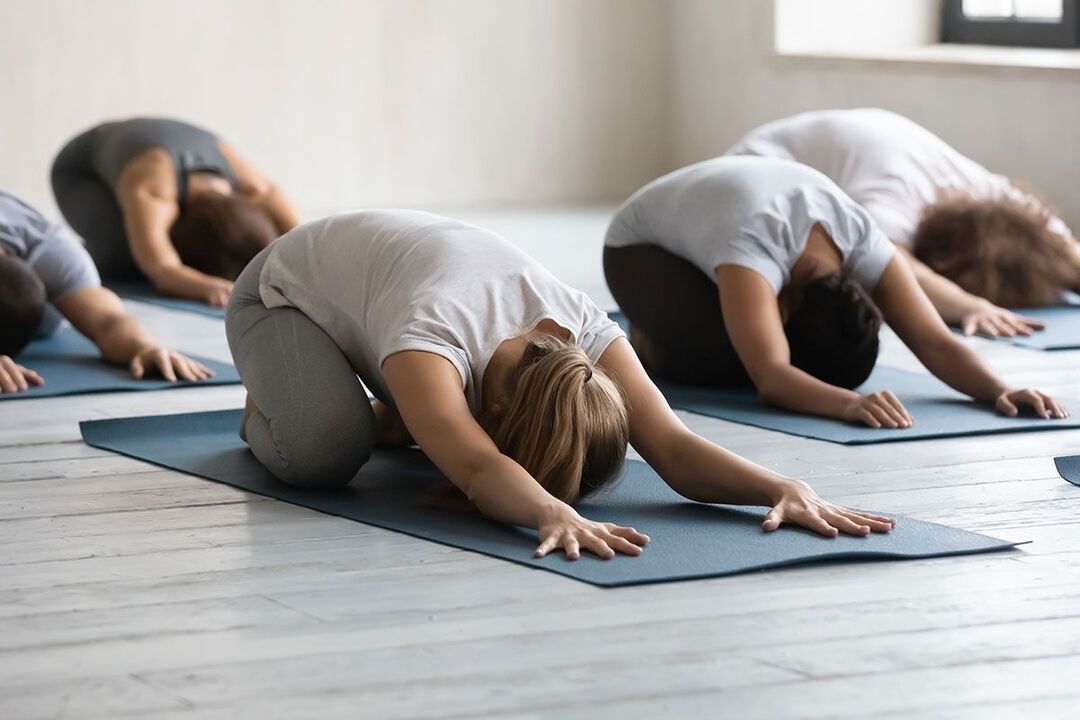
Yoga and Pilates classes help relieve spasms and tension in the lower back
Smoking impairs blood circulation and compromises tissue nutrition, increasing the risk of damage and injury.
What to do if your lower back hurts
If your lower back hurts, the reasons may be different, which means the treatment tactics will also be different.
In case of severe physical fatigue, it is necessary to rest the back: perhaps this will be enough to restore the muscles and restore mobility of the spine.
If the pain does not go away within 1-2 days or is very intense, you should consult a doctor. While you wait for a doctor, you can try to relieve acute pain with painkillers.
At the appointment, the doctor will conduct an examination, determine the cause of the pain and provide recommendations for treatment. This will help eliminate dangerous conditions and prevent the development of complications.
Warming (chilli lumbar plaster, hot water bottle, sauna) is contraindicated in case of inflammation, but can relieve acute pain in the lower back if it is caused by muscle strain or a pinched nerve. These methods can be used only after consulting a doctor.
Which doctor should I contact if I complain of back pain?
If you suspect a pathology of the musculoskeletal system, you should contact a neurologist and an orthopedic traumatologist.
The diagnosis is made during a physical examination and using instrumental methods: magnetic resonance therapy, computed tomography, radiography and ultrasound. It is also possible to prescribe a myelogram (X-ray or CT study with a contrast agent injected into the spinal canal) and an electromyography - a study that allows you to evaluate the condition of the nerve and muscle fibers.
If you suspect kidney disease, you should contact a urologist, nephrologist or therapist. The doctor will analyze the complaints and carry out a physical examination, and then prescribe laboratory and instrumental tests to clarify the diagnosis.
Based on blood and urine tests, the doctor will be able to determine whether there is inflammation in the organs of the urinary system, and ultrasound and radiographic studies will help visualize the organs, determine the cause of the pain and choose the more effective treatment tactics.
If the origin of your lower back pain is unclear, you should consult a general practitioner or therapist.
The doctor will take a medical history (medical history), analyze hereditary risks, carry out a physical examination and prescribe tests that will identify inflammatory processes or disorders in the functioning of internal organs.
A general blood test helps identify the inflammatory process.
If necessary, the doctor will direct you for instrumental studies (ultrasound, x-ray, magnetic resonance imaging) or recommend contacting a specialist for further diagnosis and treatment.




















